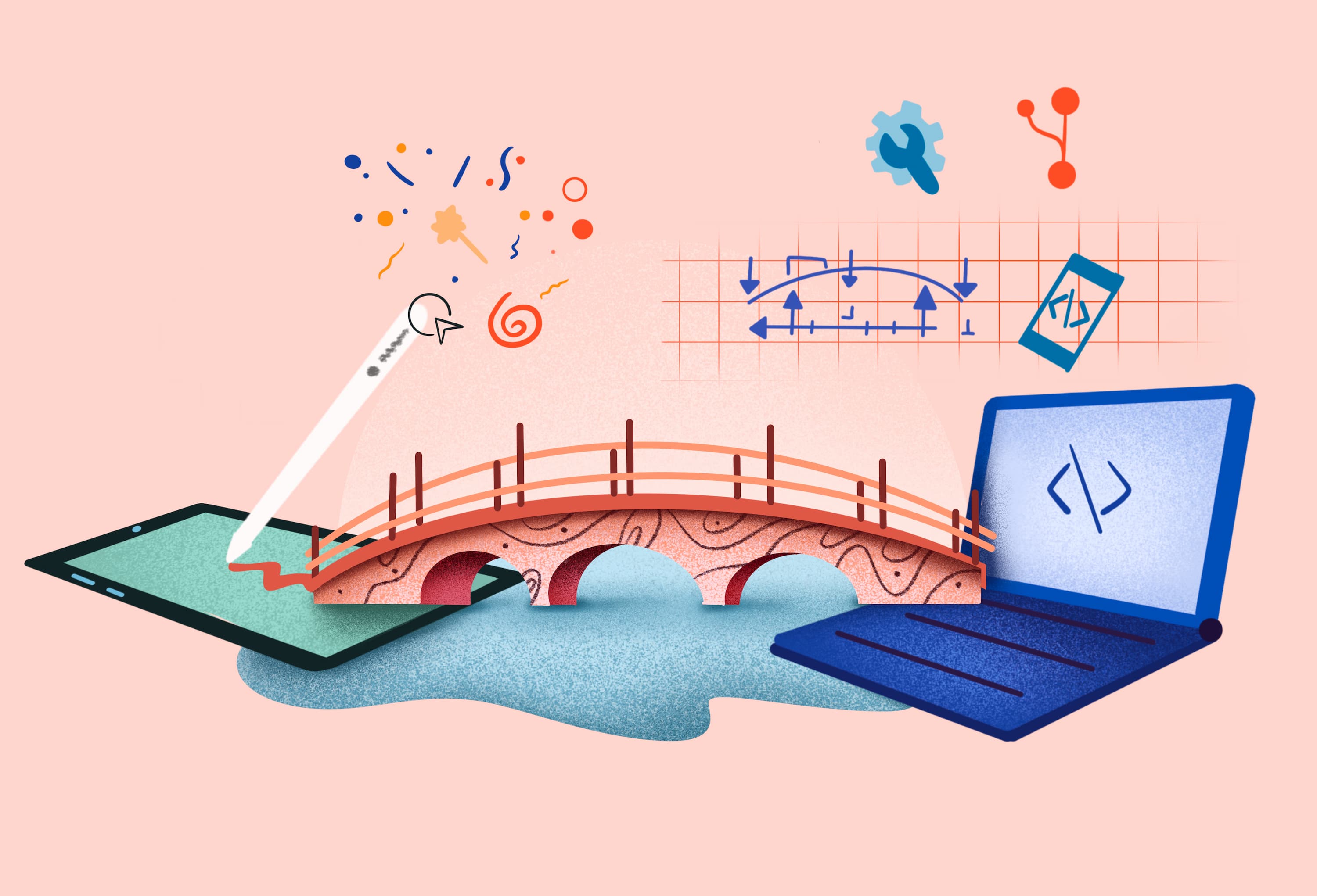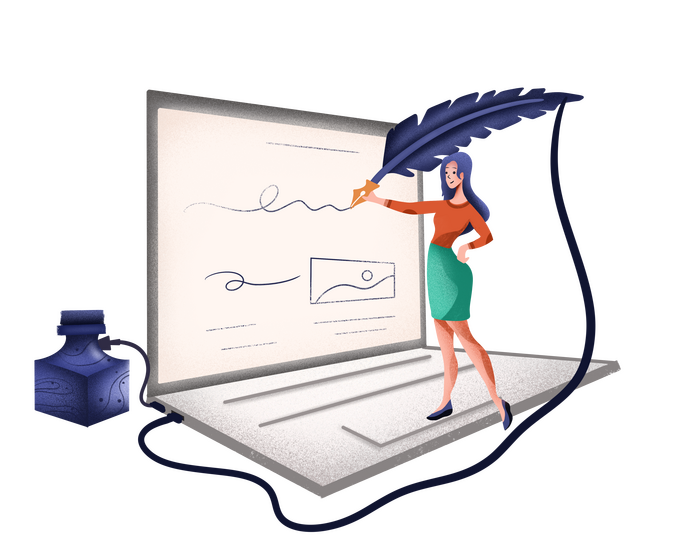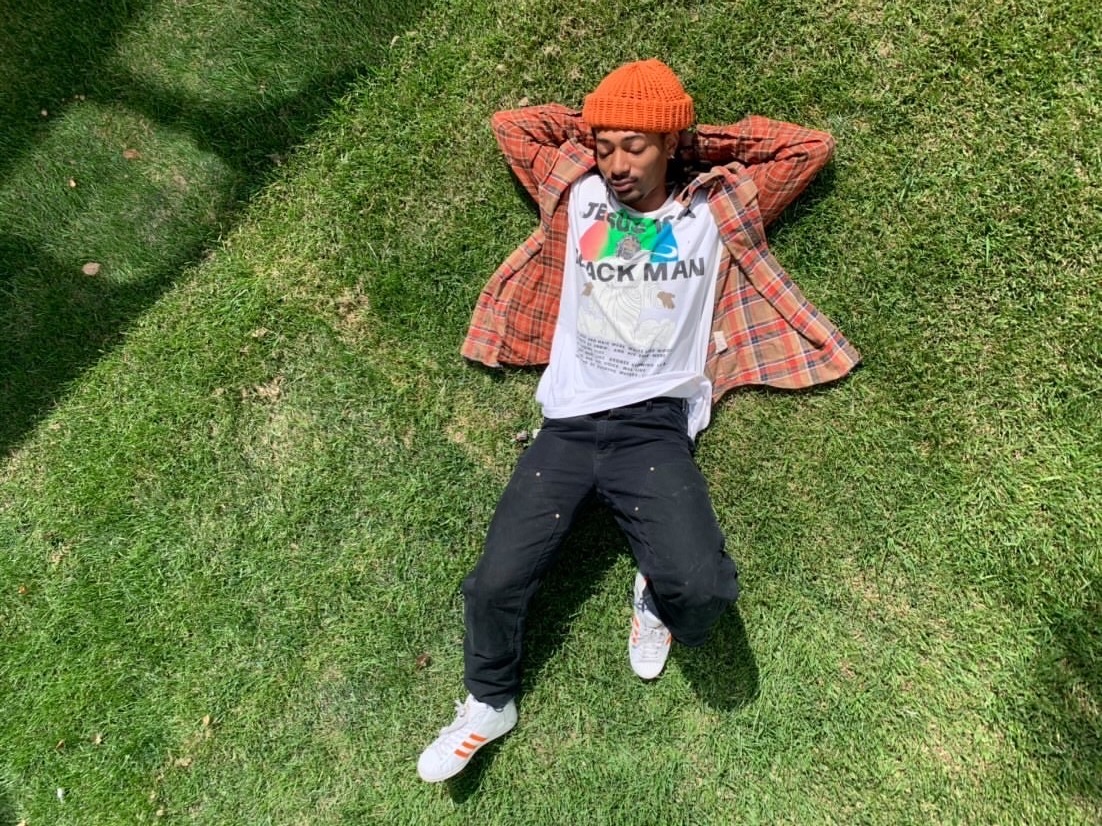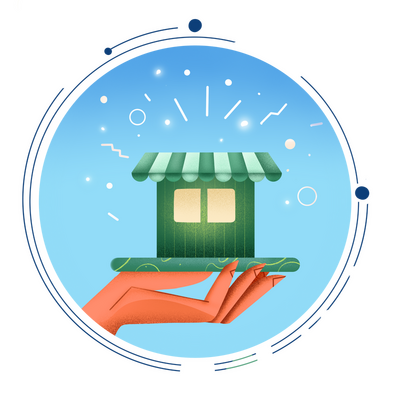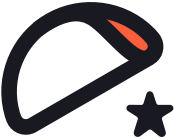It's a tale as old as time. To creatives, engineers are frustrating Mystic Wizards who can't communicate in "plain English.” To engineers, creatives are infuriating hippies with their heads in the clouds.
Personality differences are, of course, inevitable in the workplace. The sharp rise of remote work--which relies on technology for communication--further exacerbates these natural variations in work style and approach...making this “collaboration” song and dance even harder to do well.
Does that mean we resign ourselves to an eternal merry-go-round of eye-rolling and finger-pointing? Absolutely not! The key is to understand that divergences between colleagues are not always rooted in unmovable, fundamental identity traits (in fact, they rarely are). Once that myth is busted, it becomes infinitely easier to think creatively about how to best collaborate with people we might otherwise see as “just too different.” (Read: wrong.)
Yes, certain types of work demand particular thought pathways, and people who are naturally predisposed to easily navigate those pathways tend to be drawn to those jobs. The longer they stay in those jobs, the harder it is to think outside the box.
Even still, given a little empathy, bias-checking, and compromise, we all can get along--and it’s critical that we do. With more and more businesses and agencies becoming 100% remote (including Shopify), strong communication and collaboration skills are more important than ever.
Here’s how to toss the term “irrevocable differences” in the trash bin and stop creating roadblocks that don’t have to exist.

Getting to Know the Engineer and the Creative
The Engineer Archetype
While engineers are perceived to be exceptionally technical and uptight across the board, that kind of generalization is unfair. Engineers are people, after all! The unique worldviews, abilities, and interests we enjoy as homosapiens know not the bounds of our desk jobs.
(Realizing that is step one in developing empathy for your teammates, by the way!)
In reference to those “natural thought pathways” we mentioned, though, the following qualities tend to come more instinctively to the Engineer:
-
- Prefers hard data over esoteric, hypothetical ideas
- Methodical and procedural
- Extremely resourceful
- Highly independent
- Remarkably good at finding answers (Google Fu)
- May be prone to fixating on small details
- May be resistant to change if not presented with a convincing argument
Types of Engineers
Functionally speaking, there are two primary categories of software engineers:
The first is the Technical Developer. Technical devs are, as their name implies, really technical. This group is unlikely to waste time spitballing ideas for how a site should appear on mobile. They probably write more code in a day than they speak an actual human language. The Technical Developer wants just the facts, ma’am so that s/he can (independently) execute the vision that’s been presented.
The second primary category of engineer is the Creative Developer. Creative Developers often do more out-of-the-box thinking to solve problems, which means they may be less likely to panic (or give up) should obstacles or shifts in external preference mandate a change of course during development. (Sorry, Tech Devs.)
Different types of developers tend to fall into different roles. For example, front end development often pulls from the Creative Developer pool, while back end development favors the Technical. Then you have your Full Stack Developers (basically sorcerers), Dev Ops (server wranglers), and QA Agents (attention-to-detail extraordinaires).
All are integral to the creation, maintenance, and growth of a website or mobile app.
The Creative Archetype
Perhaps no better explanation could be given for why engineers and creatives butt heads than the definition of creative itself. Remember all that analysis and hard data from the Engineer Archetype? Keep that in mind while you read this:
Creative
Resulting from originality of thought, expression, etc.; imaginative
While we can’t accuse engineers of having no originality of thought (because, um, not true, and also rude), it’s this free-wheeling WHAT IF mentality that drives the Creative to create--while simultaneously driving the Engineer to drink.
As you might expect, creatives across industries share similar qualities: a high functioning imagination, conceptual thinking, curiosity, and strong aesthetics. Creatives in technology spaces share these qualities, along with a few other attributes encountered more often in tech:
-
- High energy, throwing around ideas and visions at breakneck speed
- Little tolerance for boredom or repetitive work
- Big picture thinking (“sees the forest for the trees”)
- Dislikes getting too bogged down by technical nitty-gritty
- More prone to changing tactics on a dime to try something “better”
Creatives shine in roles like graphic design, UX design, copywriting, editing, and marketing. However, many make their way into project management and leadership roles, where they can channel their creativity into problem solving.
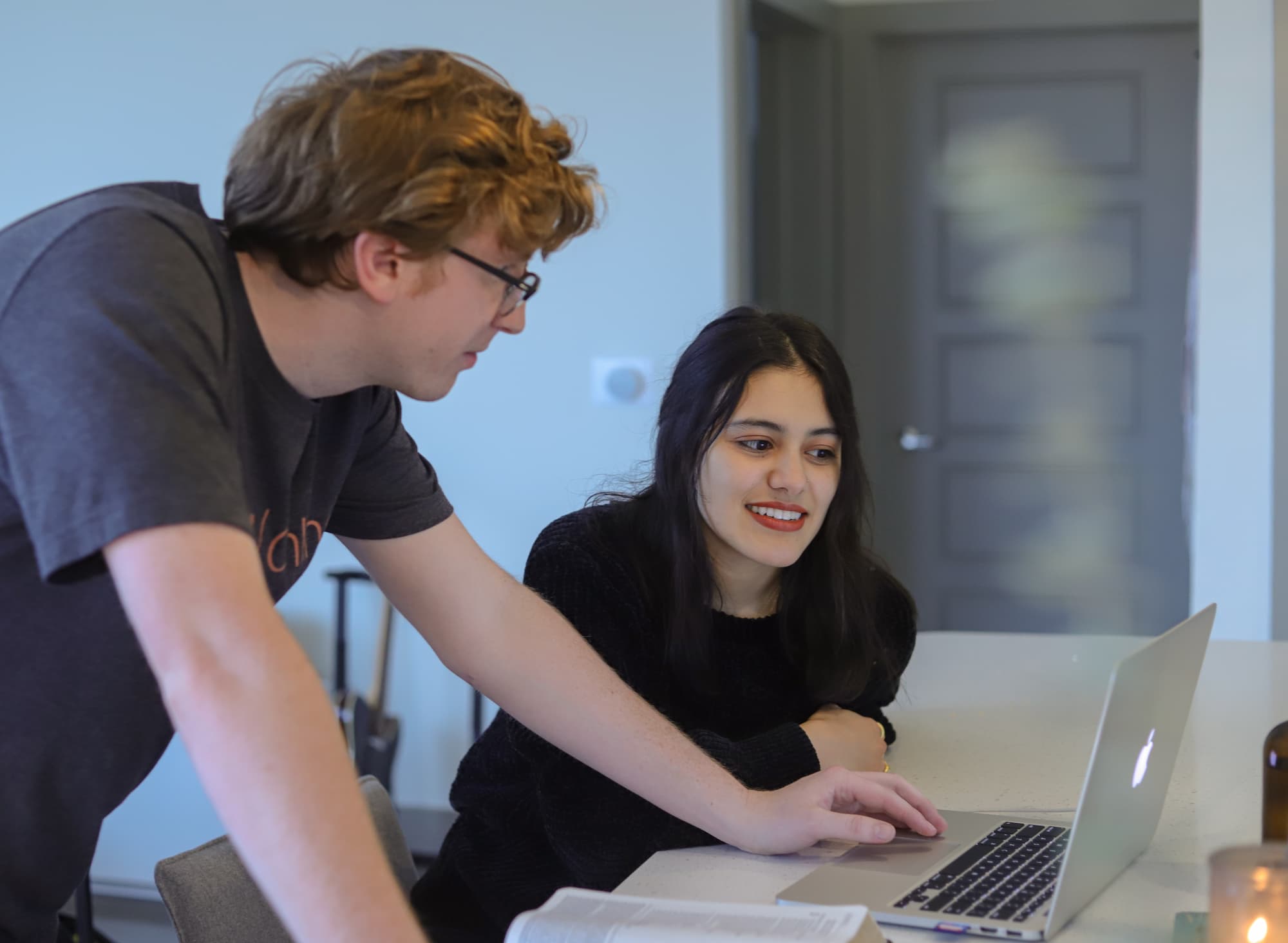
How Do Developers and Creatives Drive Each Other Nuts?
Hoooooooo boy! If you have any agency experience, particularly at a project management level, you likely have plenty to say on the subject, with a few core issues rising to the top. We polled our team and those patterns emerged in no time, flat.
A few highlights from our developers, who reported on experiences throughout their career (not just at Tako Agency):
- “Creatives are too conceptual. They’re often too broad and vague when they’re making requests, so it’s not clear to me what they want me to do.” D.
- “Creatives don’t understand what we do, so they don’t know how to ask for what they want. They also don’t seem to understand when I’m trying to get them to do something.” B.
- “Creatives ask a lot of questions. SO. MANY. QUESTIONS. Just DO THE THING! (Please.)” V.
- “They [creatives] talk a lot. They’re chatty. I appreciate that they want to ‘connect’ but that’s not important to my job.” R.
The creatives had their say too, of course:
- “Talking to devs sometimes feels like talking to a robot. You have to be super straightforward and simple with your language or they won’t get it and/or will lose interest.” C.
- “Devs seem perfectly content to execute a task in a vacuum with little to no contextual information, but I can’t function like that. I need more information to have a better understanding of what the goal is, rather than just the task.” E.
- “It’s tough to try and build camaraderie with devs. They seem to prefer being isolated in their own department/community. They never want to hang out or participate in stuff.” M.
- “Devs are so one-track-minded. Like, laser focused. We [creatives] jump around from project to project constantly depending on how the mood strikes.” N.
Can you spot the themes? We did.
Communication Style
Overall, developers are less likely to value nuanced communication and prefer things to be short, specific, literal, and to the point. They’re concerned with what’s tangible - the who, what, where, and how versus the why.
Whether simple or complex, development work is math: Problem + Solution = Function. That being the case, an experienced developer may appear dismissive or antisocial when s/he simply prefers to work independently--dazzling with elegant problem-solving rather than warm, fuzzy communication.
Creatives, on the other hand, tend to augment problem-solving prowess with more sensory elements (“How does this make me feel? How will it make the user feel?”) and value a team-building, “spitball” approach--churning all manner of ideas in the community pot until they brew something that achieves a goal or meets a need -- beautifully and on brand.
Meanwhile, the Dev stares into the swirling abyss, waiting for marching orders and wishing s/he was dead.
Multi-Tasking
Creatives are more likely to multi-task and jump from project to project, while developers prefer to stay laser-focused on one task at a time, methodically making their way through their priorities.

Collaboration and Camaraderie
Developers are more likely to prefer working alone, while creatives tend to value greater collaboration in the workplace. For example, creatives may be thrilled to participate in morning chit-chat or team-building exercises, while developers would typically rather dispense with unnecessary niceties and just get the work done.
Logic and Reason vs. Freedom and Creativity
We can illustrate this difference by visualizing a work of pointillism, where the dots of color are the tasks and the overall image is the end goal. Creatives see the picture in the context of the ultimate goal, which means they’re comfortable (and sometimes prefer) when things shift around, so long as the image will be the same (or better) in the end.
By contrast, developers tend to see the picture in the context of only the tasks--the dots--because they’re the ones who have to execute the majority of them. That being the case, it can be endlessly frustrating when a dot is moved (seemingly arbitrarily), or an intended pattern is too vaguely explained by a creative.
Function vs. Function + Beauty
Perhaps the biggest difference between developers and creatives lies in the core value that drives work.
Engineers feel their work is successful when it simply does the thing it was designated to do. Did we solve the problem? Did we fix that bug? Yes or no. Moving along.
Creatives, on the other hand, might say: yes, fine, it works -- but does it look good? Does it fit with the rest of the project? Is it intuitive enough? Does it make me feel things?
If the Engineer has completed a Collections page, they’ve completed a Collections page: a page exists on a website that shows the things in a Collection -- end of story.
The Creative wants that and more: to be styled and designed to match the brand, with filters and sorting functions for easy navigation...and maybe even more.
With these examples, it’s easy to see how expectations could be missed (causing tensions) and communication struggles may arise.
Do Engineers and Creatives Have Anything in Common?
Despite all apparent differences, there are similarities between engineers and creatives:
- Both understand that effective planning is key to project success.
At the start of a project or task, an engineer sees the end goal and then deconstructs it to create a streamlined development process. Much the same, a creative must understand the overall vision and goal before attempting design or copy. - Both need to be incredibly mentally dexterous.
Since they are basically the Builders of Everything Digital™️, their brains are trained to effortlessly (OK, sometimes not-so-effortlessly) apply a vast array of skills to every project, even if one looks completely different than the next. - Both want to make the client happy.
It’s easy--for all of us--to get wrapped up in our part of a project, and forget that we’re all headed in the same direction. At the end of the day, good engineers and creatives are both trying to do their best, achieve the goal, and make the client happy. - Both can demonstrate qualities of the other!
Their respective fields may necessitate flexing of certain skills over others, but that doesn’t mean engineers can’t be creative and creatives can’t be technical.
Problem-solving requires creative thinking, whether the problem is in cold, hard code or the more esoteric “customer journey.” Present an engineer with a goal, and watch him or her innovatively run through all possible answers to find the winning solution.
If the flighty, imagination-fueled stereotype fully described the Creative, nothing would ever get done. Successful creatives methodically reverse-engineer broad projects into bite-sized tasks to meet deadlines and satisfy expectations of teammates and clients.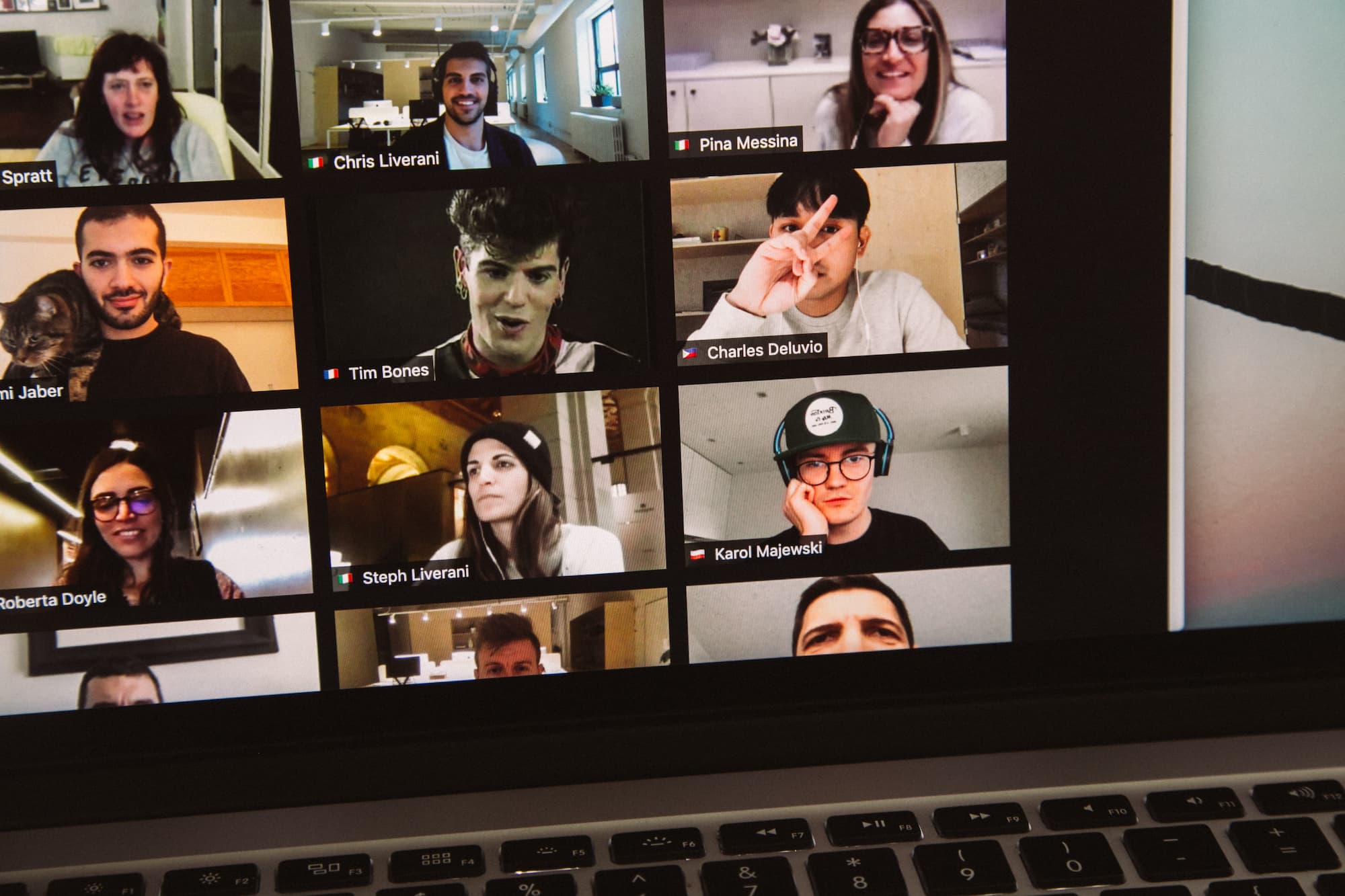
Challenges of Communication in Remote Agencies
Communication challenges between creatives and engineers are further exacerbated by the nature of remote work; namely, relying solely on technology with little face-to-face interaction.
Even when you’re able to get everyone online at the same time, tone of voice can be hard to decipher and body language can’t be perceived, removing critical contextual information about mood and intent. Frustration and humor in particular become difficult to discern.
Another aspect that makes communication challenging in a remote agency is location. There’s a lot of incredible talent around the world, which remote agencies--not bound by geography--are free to take advantage of. That said, differing time zones and work styles (i.e., some devs preferring to work at night) are an added (complicated) planning factor.
Given what we know about the contrasting communication styles between engineers and creatives, it’s easy to see how technology can make it worse: straightforward communication from engineers could be construed as brusque or rude by creatives. Conversely, requests made by creatives could be too “squishy” (read: unspecific) for devs to effectively implement, leading to endless back-and-forth.
A Few Tips for Acing Communication in a Remote Agency
Slack is without a doubt the most commonly used communication application within agencies--ours included. Teamwork is further supported by the project management system (Jira, Asana, Monday, Trello, etc.), email, and video chat tools like Google Meet or Zoom.
(Although the “video” feature may be somewhat underutilized by those who prefer pajama-clad working hours. Let’s be real: one of the major benefits of working from home is not having to take off the hoodie you’ve been wearing for 9 days straight.)
Of course, there’s also the more hands-on component of communication--something many traditional offices never have to worry about, but an element that’s absolutely crucial to remote agencies. After all, you can’t just lean over your colleague’s shoulder, point at their monitor, and say, “Why does this look so weird?” or “Can we move this to there?” Screenshots and screencasts with software like Droplr and Loom are vital to painting a complete picture.
Bridging the Gap
How can we bridge the gap and set both teams up for success?
Finding a Middle Man
Sometimes, if the agency gods bless you so, you’ll find a unicorn in your hiring process--the logical-creative” or “creative-logical” type.
These hyphenated individuals can straddle both sides of the process: they can see the big picture and pivot in order to fit that vision, but they also understand the technical steps involved in each decision and the consequences of each change in direction.
Build Opportunities for Connection
“Before you judge a man, walk a mile in his shoes.” We are far more likely to empathize and understand the “other side” when we take time to understand what day-to-day life is like for the other individual.
This can obviously be difficult to achieve with remote teams, so it’s important to capitalize on any opportunity. For example, instead of treating staff meetings like dry recitations of action items, have a member of each team share a major problem they dealt with and do a quick screen share to explain their thought process and workflow for solving it.
Encourage teams to celebrate each others’ accomplishments. When a major company win occurs--like a website launch or meeting a fundraising goal--celebrate with a virtual happy hour so teammates can congratulate one another and share a sense of camaraderie.
Pro tip: if you decide to host a virtual happy hour, have mercy on your engineers--keep it short and sweet, or at least make it clear that attendees are welcome to bow out at any time, free of judgement.
Adjust Expectations and Communications
Instead of writing off any member of your team as impossible to work with, try to be respectful of--and even celebrate--other work styles when the need to collaborate arises.
If you’re a creative and you have a meeting with a Technical Developer, outline a clear agenda with distinct problems to present, rather than a jumble of half-baked ideas that you expect to be able to work through with them in real time.
If you’re a developer working with a creative, understand that you may need to be particularly agile with your methods and iterate often as you work through a project. Also, ask pointed questions, in the plainest language possible.
Practice the Basics of Good Communication
When in doubt (or if you think you’ll struggle to get buy-in from team members on some of the above suggestions), keep it simple. Use emojis to help convey the mood and tone often lost in written communication. Avoid naysaying ideas without taking part in finding solutions. Practice positive communication to keep tempers from flaring unnecessarily.
Positive language is a helpful skill for any collaboration, and involves framing what you say in a positive light instead of a negative one.
Common phrases include:
“I understand where you’re coming from…”
“Yes, but...” instead of “No”
“Help me understand where you’re coming from with this.”
“What else do I need to know to help you be successful?”
“We don’t recommend that because X but here’s an alternative to consider...” instead of “We can’t do that.”

Bottom Line?
At the end of the day, no matter how kumbaya it sounds, creatives and engineers do need one another if they hope to make agency magic happen. Creatives need engineers to turn their esoteric ideas and design visions into tangible products, and engineers need creatives to drive the overall concept and UX of the project.
Creatives are the pie. Engineers are the oven. Value or emphasize one over the other and no one gets that warm, fruity goodness. Who wants to be liable for denying anyone piping hot pie? Certainly not us.
Want to connect with some of the brilliant creatives and engineers over at Tako? Contact us here!









